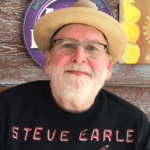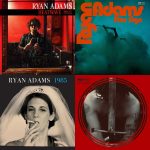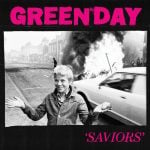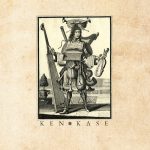King Crimson w/ The Zappa Band: Rose Music Center; Dayton, OH – Thursday, September 2, 2021
It needs to be said right from the start, that King Crimson is a unique anomaly among progressive rock bands from the earliest era of rock music history. How early? Crimson released their fourth studio album 50 years ago, and unlike similar bands from that era Robert Fripp has never felt a need to limit his musical explorations to the band’s early sound, but has taken the band’s music in new, experimental directions, often impacted by his choice in collaborators. Over the years, King Crimson has included the likes of Greg Lake, Peter Sinfield, Ian McDonald, John Wetton, Adrian Belew, Bill Bruford, and Bill Rieflin, but the one constant has been Fripp, who has collaborated beyond Crimson with folk like David Bowie, Brian Eno, Peter Gabriel, and Talking Heads. It’s Fripp’s singular music vision that defines King Crimson, and he alone who creates the setlists and defines how his vast catalog of music is currently presented to the public.
Thus, King Crimson has made numerous breaks with tradition rock music protocols. For instance the current band line-up includes 3 drummers, and Fripp puts them up front, with the rest of the band, on risers behind them three massive kits. Fripp eschews all the standard rock music posturing, he and the band didn’t address the audience on Thursday night at the less than 2/3rds full Rose Music Center. The band came to the stage with the players in the back row wearing black suits and white shirts with ties, it had more the feel and vibe of a Symphony performance than a rock concert, complete with a brief moment of cacophony once they’d taken the stage, to make sure their instruments were in tune, and everything was working as desired.
Opening with “Hell Hounds of Krim” gave Crimson a golden opportunity to show off the musical possibilities that came with having three talented drummers. Gavin Harrison (stage right) started things off playing the polyrhythmic frame of the piece, joined by middle drummer Jeremy Stacey the second time through, and Pat Mastelotto the third, and as they would throughout the evening, the trio played the complex rhythms tightly and in unison, and then broke off playing the piece with each drummer offer a unique response to the others, that fit together like the pieces of a puzzle. Watching the smooth and seamless ways these three musicians collaborated to bring this music into being was fascinating and enjoyable. Stacey often turns and plays keyboards as some of the music required, leaving the other two the interact powerfully, this current format is a percussionist’s wet dream, and their contribution throughout the 90 minute set was significant.
“Pictures of a City” brought the rest of the instruments into play, most notably bassist Tony Levin, Mel Collins who plays all the saxes and flutes, lead vocalist and guitarist Jakko Jakszyk, and of course Fripp, who sat down and wore headphones throughout the concert, on lead guitar. The piece opens with a lively jazz section, before moving into a very intense progressive section followed by a the quieter section, which moved very nicely into the warm orchestrated feel of “Epitaph,” which again included a sensuous solo from Collins. Both these pieces were from the band’s first two albums, originally recorded in ’70, and ’69 respectively.
The harder rocking “Red” came next, giving Fripp a chance to bring the heavy side of his musical tastes to the fore, building off a huge metallic riff, the drummers driving the beat, but following it with “One More Red Nightmare,” with the big bass riff driven by Levin to match Fripp at his most aggressive. Leven moved to his upright bass for “Tony’s Cadenza,” a moment of soloing from the veteran player that functioned as a segue into “Larks’ Tongues in Aspic, Part Two.” Here we get more of that more distorted, somewhat “raunchy” hard rock guitar riffing from Fripp, supported by big beats from the drum corps, the sax by Collins adding jazzy flourishes.
The old-world British folk feel of “Islands” provided a major change of pace, with Stacey and Fripp playing piano and keyboards, a lovely airy sax solo adding to the music’s beautiful respite from the sonic storms. “The ConstruKction of Light” came next with some of those long extended linear guitar lines from the Belew era with the band, Fripp playing against Levin who had moved to his unique instrument the Chapman stick, a curious stringed instrument that can sound like a bass, guitar and keyboard often at the same time. The song’s polyrhythmic core played right into the hands of the band’s three drummers, and the band leaned heavily into the piece’s modern jazz feel.
The concert was kicked into a higher gear with the big rock guitar riff of “Radical Action II,” and the intense interplay of the drummers, with a high flute melodic section over the top, which flowed seamlessly into another riff heavy rocker, “Level Five,” with strong playing from the drummers, and more sax from Collins. Big stiff rock chording, followed by these soaring melodic runs, it had the feel at times of jazz/rock fusion bands like Return to Forever,” the drummers playing off each other like Genesis instrumentals from the 70’s, when Phil Collins would duet on two big kits with Chester Thompson, very intense.
While it didn’t feel like the band was holding anything back on these rocking instrumentals, somehow the opening riff of one of the band’s earliest FM radio airplay hits, “The Court of the Crimson King,” took the energy even higher on the stage. The strongly orchestrated feel included lush majestic strings sound coming from the keyboards, and the familiar classic rock chorus brought the crowd to its feet for the first time, they had been response and clapping and yelling loudly when each piece concluded, but tended to sit and study the interactions of the band more like a jazz or orchestra performance than a rock show. But this track, dating all the way back to 1969 brought all that pent up prog joy to the surface, while the sax and bass provided some outstanding moments of musical bliss. But not unlike a classical concert when part of the audience begins clapping between movements, the band waited for the applause to finish and then returned to the song, playing the “Coda.”
They followed this with “Indiscipline,” which included a long playful intro with Levin back on Chapman stick, tapping out a simple rhythm with each of the three drummers taking a turn responding, before the full band came on and things took a bold, chaotic turn, and the fun vocal line, “I repeat myself when I’m distressed,” which of course of course was repeated. Then the band closed out the set with “Starless,” the song they’ve been consistently using to end their sets on this tour. But as this lengthy piece builds from the quieter feel of Fripp’s elegant guitar melody and Collins’ sax solo, and the even quieter midsection with Levin’s bassline and Mastelotto using a percussion instrument to start a ticking grinder sound which slowly grows with the drummers increasing intensity to match to darkening tone in Fripp’s guitar, which eventually builds to the sound of an urban traffic jam, all beeping horns and the clash of saxes and cymbals as the chaotic church rises, only to stop and return to the original melody. Up until this point in the show, the lights on the stage had remained bright, white and static, unchanging, but midway through the songs intense jam section they turned red and stayed that way until the end, as the band left the stage.
After a few minutes of standing ovation, the 7 players returned to the stage for the much-anticipated encore, “21st Century Schizoid Man,” the biggest hit the band ever had, again from their debut album in ’69. Fripp dominated with the song’s big metallic guitar riff, Jakszyk, who had been in great voice all night, sang the vocal hook like a triumphant rock star and the drummers took a triumphant victory lap. The extended mid-section of the piece allowed room for an interesting jazz trio break with Collins on sax again, Levin on bass and Mastelotto on drums, then Gavin Harrison took an artful drum solo, and boom, they were back around to that monster guitar riff, and the vocal chorus one final time. It was a lovely night for the prog rock band and it’s fans, and if the rumors are correct it may be the last tour for the 75 year old, Fripp. Kudos, sir.
Opening the show on this night was “The Zappa Band,” made up of a group of musicians who had played with Frank Zappa before his last tour in 1988, or had played Frank’s music with his son Dweezil in his Zappa Plays Zappa band, a tribute to his father’s music. Since Frank’s death in 1993, Dweezil’s rare tours have been the only way to hear these great songs performed live, so it was actually a lot of fun to hear “Peaches en Regalia,” “What’s New in Baltimore,” “City of Tiny Lites,” and “Andy” played live by a crew of old guys who knew and loved this music and seemed to be having the time of their lives on stage playing it again. Mike Kineally on lead guitar and keys, drummer Joe Travers, who has also worked on releasing Zappa’s vast vault of recordings, bassist Scott Thunes, vocalist and rhythm guitarist Ray White, Robert Martin on vocals, sax and keys, and guitarist Jamie Kime all stood up the music of Zappa well, and played it with a lively spirit that was contagious, which was more than enough to provide 45 minutes of fun.
Brian Quincy Newcomb has found work as rock critic and music journalist since the early 80's, contributing over the years to Billboard Magazine, Paste, The Riverfront Times, and The St. Louis Post-Dispatch. [Brain sadly passed away on April 15, 2024, but his reviews live on as a lasting tribute to his impact on music journalism. We keep him on our minds with every review we post.]





